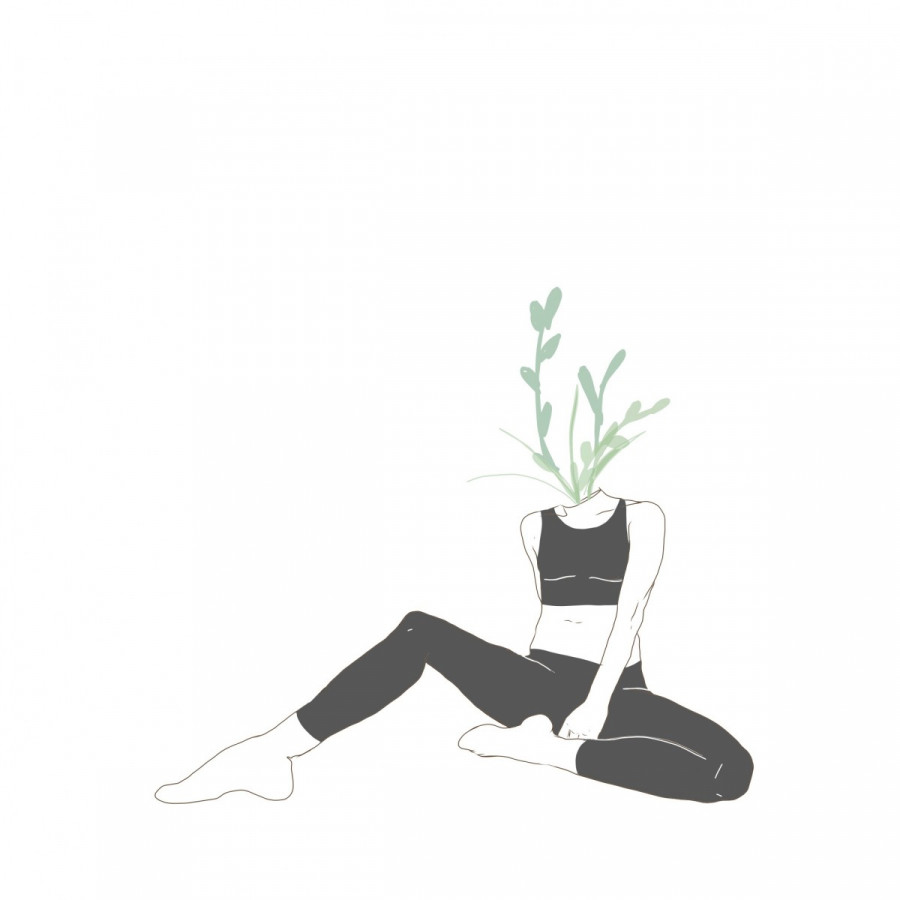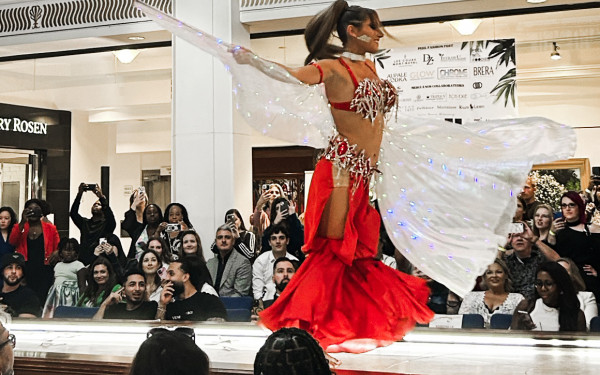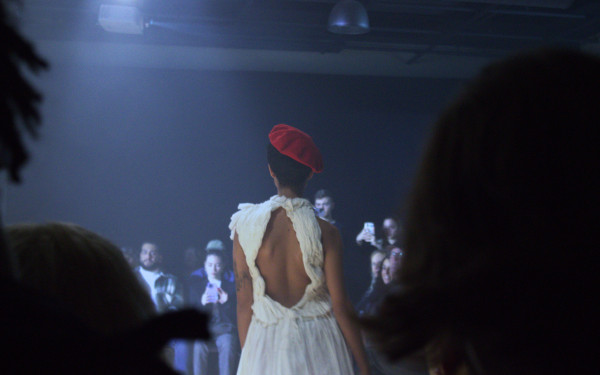The Intersecting Futures of the Sustainability Movement and Fashion
The Evolving Role of Fashion as a Commodity, Art Form, and Sustainability Movement
Opinions, consumption habits, behaviours, priorities and lifestyle choices are the raw expression of a generation’s mentality.
Certainly, what is considered fashionable today is radically different than in the twentieth century, since consumption patterns and social norms always evolve. According to Nielsen, a global data analytics company, “66 per cent of global consumers say they’re willing to pay more for sustainable brands—up 55 per cent from 2014.” Buying sustainable products is a growing trend for the average millennial shopper. And this is not only limited to fashion; it encompasses several areas of many millenial’s lives.
The book Fashion Marketing: Contemporary Issues, by professor of marketing Tony Hines and professor of design management and marketing Margaret Bruce, explained that, “The turbulent economic environments of the 1970s and 1980s […] revolutionized the fashion industry as it began importing and exporting at a global level and the market was no longer constricted to the local economy.”
Consumers Take the Lead
An industrial building in the Mile Ex opens into a short corridor leading to Marilyne Baril’s atelier. Sunbeams shone through the window, giving more life to the already cosy space. The walls were lined with two rows of superimposed clothing racks, reaching the ceiling.
Trousers with scalloped edges, striped blouses and winter coats are among the garments in a range of solid neutral tones or simple prints tightly packed onto the racks.
Baril is a fashion designer based in Montreal who launched her brand Marigold in 2013. She began the project after realizing she wanted to contribute to the local economy by creating ethically manufactured products that offer a sustainable “chic urban” alternative for the modern woman, which is how she described her customers.
One of the most significant shifts about the fashion consumption culture Baril has noticed pertains to the consumer-producer dynamic. “The market changed just because the consumer changed,” she said.
“Before the opening of the market in approximately 2000, we didn’t have Zara and H&M and all the big international brands, there were less choices. Seeing the ‘Made in Canada’ label was normal, and higher prices were normal,” she explained.
Baril learned through her attendance and participation at a conference in New York City that manufacturers were pressed to conduct research about biological fabrics to supply the increasing demand of their customers. “The designers, like me, we have to listen to them, and then we ask our manufacturer to produce biological fabrics,” she explained.
In previous generations, the freedom of choice was limited, and the consumer had to buy whatever was available, said Baril.
Many millennial shoppers are well informed about certain realities regarding health issues, environmental standings and fashion consumption due to the globalization and the abundance of information available on the web.
Norma Rantisi, professor in Concordia’s geography, planning and environment department, said that the 1990s brought on, “The adoption of fashion [as] part of an individualistic kind of expression of your personality rather than following a collective lead.”
The average consumer relies less on magazines to tell them what they should be wearing, Rantisi said.
“A lot of consumers want to pick their own styles to mix and match rather than to have kind of a complete seasonal style suggested to them,” said Rantisi.
Consumers seem to have stepped away from always following a mold created by fashion magazines and are starting to personalize their projected personas.
Indeed, more and more Hollywood celebrities, as well as the average person, are seen pairing heels with sweatpants, designer pieces with old sneakers, or a pair of jeans with…well anything.
Fashion Accommodates a Lifestyle
With the accelerating pace of life, the overwhelmingly busy schedules and the rising expectations for women, especially after they joined the workforce, Rantisi said different aspects of women’s lives have amalgamated.
“I think fashion has strived through the 1990s to become more about lifestyle, so you started to see the cross-marketing of clothing with home furnishing or with other things that embody someone’s total package,” she said.
The 90s also popularized the trend of casual dressing, which Rantisi said is an extension of the lifestyle approach to fashion.
Sustainability occupies an increasingly significant portion of today’s generation’s discourse, leading people to select their wardrobe according to their personal values and life choices. However, it is a slow transition.
Baril said she often receives remarks regarding the seemingly outstanding pricing of her collections because people don’t understand the conceptual element behind her brand, which not only respects the craft of designing quality products, but also operates with ethical practices.
The importance of ethical manufacturing and sustainable production bypasses the shoppers who look for the cheapest price tags. However, Baril’s brand speaks to a clientele who recognizes the values that Marigold embodies and brings to the fashion market.
What It Means to Be Fashionable
Pierre-Yann Dolbec, an assistant professor in Concordia’s marketing department, pointed out that “the logic of accessibility” present in the fashion industry has changed the consumer’s perception of what it means to be fashionable. “You can mix and match fast fashion brands, second-hand clothes, and designer items and still come out as being fashionable and stylish,’’ he said.
Dolbec explained that this type of “mix and match” accessibility allows for the development of a more sustainable alternative, all the while giving people the chance to develop and diversify their personal style.

$ Money, Money, Money $
Aside from second-hand shopping, the affordable alternatives consist of fast-fashion brands known for their unethical standards of production.
Rantisi suggested a solution to improve labour conditions in the garment production industry by re-proportioning the costs.
Rantisi explained that fair wages for labourers result in the production of higher quality garments, while operating under sustainable and ethical standards, creating a “virtuous cycle.”
At the beginning of her career, when Baril worked for fast-fashion companies, she noticed the way they operate was based on a high turnover rate, prioritizing the quantity produced rather than its quality.
She said that some shoppers fail to recognize the value of her product without first understanding the operation of the garment manufacturing industry. “[My girlfriends] buy my stuff only when it’s at a discount,” she said.
Baril explained that her friends say it is expensive, but she disagreed saying, “No, it’s the real price of real clothes.”
In order to promote a conscious consumption habit, Baril believes it is crucial to educate people to look for ethical clothing choices. She explained that many of her customers do research before shopping in order to find clothing that has been ethically produced, because it is important to them.Baril said it’s all about the budget you allow yourself to spend on clothes. “You want to pay 10 bucks today, but in the back of your head, you know it’s going to stay nice for maybe one month and you’re gonna have to pay again.”
Cycle of Over Consumption
Overconsumption is an undeniable characteristic of the North American lifestyle. The U.S. Environmental Protection Agency reported that 10.5 million tons of textiles, a category within municipal solid waste, were landfilled in 2015, up from 1.7 million tons in 1960.
With the influence of platforms like Instagram that prompt their users to present their ideal life to their virtual followers by showing off belongings as well as experiences, users are often pushed towards a materialistic lifestyle to sustain their brand. Dolbec suggested that consumers are unconsciously pursuing an ideal.
“Somehow, you are geared towards finding where you have an edge towards others, and it’s not in an evil competitive kind of way but more of wanting to feel special,” he said.
He believes that part of the destructive consumption patterns are associated to ideologies promoted all around us that we subconsciously implement into our own lives.
Rantisi explained that “It’s important to understand the structure of industry and the role it plays in driving consumption too. There are these general changes, demographic changes, changes in work and life boundaries, but it’s also important to consider role of the industry. With globalization, which can be traced back to the 1970s, what you started to have was an outsourcing of production to overseas and there was a real decline in the industry because of competition.”
The restructuring of the clothing industry’s entire operating system constituted a struggle for North American companies in regards to higher costs allocated to workers’ salaries, compared to their competition. This pushed them to cut their expenses elsewhere continued Rantisi.
She said this led to a proliferation of competition based on innovation, which in fashion translates into multiple offerings rather than on one quality product.
“I think a lot of fashion is, for most people, what you see hanging on the rack and not the whole system that lies behind it.” — Norma Rantisi
Identity Projection
According to Rantisi, social media has become an outlet to project an idealized identity. Dolbec goes on to explain that the greater the chance we have to socially compare ourselves to others, the more likely we are to purposely engage in behaviour that we perceive as an elevation of our status, which can lead to dissatisfaction with life.
Social media platforms have given ways for their users to show off a lifestyle. Some, as Dolbec said, use it as a tool for competition and comparison. Others, however, want to advertise their lifestyle through their fashion choices that support a wholesome approach to life.
“People decide to show off what they want to show off,” Baril said. She added that her clientele wants it to be known that they are wearing Marigold, since it is a sustainable and locally produced brand. As a response to her customers’ request, Baril designed t-shirts with the word “Marigold” centered on the front in her brand’s font. “Montreal” appears right under it, in a smaller font size. She even made an elastic trimming repeating the word “Marigold” which she plans to include on upcoming undergarments designs.
Baril hopes that sustainable fashion will outlive its current status of being a trend for some consumers, leading to it becoming a permanent choice.
Leaning Towards Sustainability
With the rise in popularity of sustainable consumption, the thrifting market has gained a newfound fame. Although some thrift stores still adhere to their original purpose of simply providing an affordable option for the less fortunate, many in Montreal are part of a trendsetting market.
Dolbec pointed out that the way, “Second hand is being pushed at the moment is very well embedded into social distinctiveness, like logic, because [consumers] can go to a second hand shop and buy clothes that would be the same price as they would be at H&M. I don’t think it’s outside of a neoliberal capitalist system, I think it’s very well embedded in it.”
Rantisi said that, “Thrifting is itself now, in response, becoming appropriated as also a new means of market niche or market advantage and finding ways of ensuring that sustainability is conceived not only in terms of environment impacts but also social considerations and affordability. My only concern is that thrifting itself is becoming an industry.”
Nevertheless, thrifting is an option that works with the model of recycling and reusing clothes and does not require new production.
While the debate around its economic future in the fashion scene continues, the principles of thrift shopping resonate with today’s consumers, who have grown conscious about environmental issues and their own sense of individualism.
Moving Forward
Despite the consumer’s efforts to make conscious decisions, Baril pointed out that oftentimes, the entirety of the fashion industry is reduced to the final product people see in stores or in magazines.
“But when it comes to fashion industry, because we don’t see [its production] and it’s far [removed]; we don’t see [the condition of the working people] and we don’t want to see it,” she said.
Rantisi expressed a similar conviction to Baril explaining that, “I think a lot of fashion is, for most people, what you see hanging on the rack and not the whole system that lies behind it.”


_600_832_s.png)




